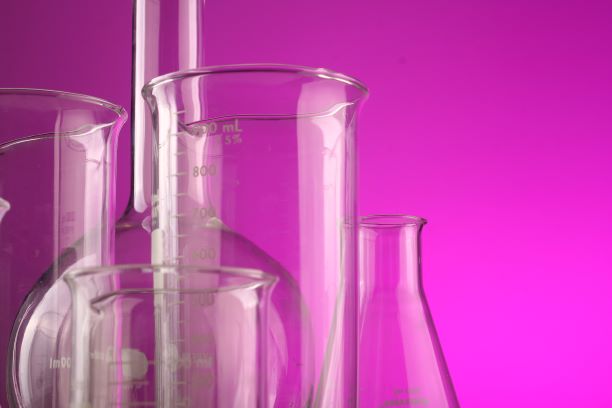
What is estradiol? What is this sex hormone’s role?
Hormones are messengers that are present in all multicellular organisms – be they animal or plant organisms – that coordinate the functions of each part of that organism.
The sex hormones par excellence are estradiol in females and testosterone in males. Although it’s true that is produced by both men and women, but at different levels.
Estradiol is produced from testosterone, thanks to an enzyme called aromatase. We will find this enzyme in ovaries, testicles placenta, brain, bone, prostate and adipose tissue (fats), and adrenal glands.
Índice
Estradiol in women
Some of its most important roles include:
- In puberty, develops secondary sexual characters (growing of hair in underarm and pubis, pelvis widening, breast growing, fat redistribution…).
- Triggers first menstruation.
- Encouraging bone maturation (favouring growth in long bones and also mineralisation in bones).
- Ensuring that a single mature oocyte is formed during each menstrual cycle.
- Activating production of another hormone (luteinizing hormone or LH) that produces ovulation.
- Preparing the part of the uterus known as the endometrium for the embryo to nest and lead to pregnancy.
- Reducing the viscosity of cervical mucus in order to promote mobility of spermatozoa through it.
Correct estradiol levels according to the woman’s age
In childhood
In childhood, the estradiol levels keep low and raises in puberty until reaching the adulthood levels, about 50pg/ml.
Reproductive maturity: changes in menstrual cycle
It keeps constant in adulthood, although its level may change in menstrual cycles. Approximate values we can find at the different cycle stages are:
- Basal level, determined from the first to the third day of menstrual cycle and, as we mentioned, level should be about 50 pg/ml. Whilst on this period, values higher than 60-70 pg/ml may indicate low ovarian reserve.
- In follicular phase estradiol increases up to 200 pg/ml.
- We find a peak before ovulation that reaches 400 pg/ml. After this, it decreases until the woman starts menstruating.
Estradiol levels in pregnancy
During pregnancy, placenta produces estradiol until it reaches 3.000pg/ml on week 12, 9.000pg/ml on week 20 and 14.000pg/ml at the end of pregnancy.
Estradiol levels in menopause
At older stages, estradiol levels deceases until it completely disappears with menopause. These estradiol low levels increases the chances to suffer osteoporosis and also related to mood changes and sexual disfunction.
Estradiol in men
Although estradiol is considered to be a sexual female hormone, as we have already mentioned, it also has a relevant role in men. Is in charge of the sperm, libido and erectile function production regulation.
Levels in men are lower than in women, being normal level up to 15pg/ml. Higher levels can develop female features such as breast growth (gynecomastia). As the enzyme producing estratiol is mostly located in the adipose tissue (fat), overweight may increase the estraiol level producing gynecomastia.
Importance of knowing the estradiol levels
Determining the estradiol levels in blood may be useful in some circumstances because it allow us to, among other things:
- Diagnose certain types of tumours in the ovaries and testicles.
- Find the cause of abnormal development of male and female characteristics and detect premature puberty in girls.
- To estimate the ovarian reserve, not by itself, but to value the estradiol levels along the LH and FSH (follicles stimulation hormone) and an ovaric ultrasound scan. In recent years, the antimullerian hormone has been getting importance to value the ovarian reserve, as it can be done at any time of the cycle and is not conditioned by the taking of contraceptives.
- Assess follicle (structures where the oocytes grow and mature) growth during ovarian stimulation in a course of assisted reproduction treatment.
Estradiol use as hormone therapy
So many functions are regulated by estradiol that a few years ago it was developed as medication.
- Is used to delay puberty.
- We may treat the typical menopause symptoms, such as vaginal dryness, burning and irritation, as well as preventing osteoporosis in postmenopausal women.
- Is used to restore levels when is not naturally synthesise due to ovarian failure.
- It may also be a contraceptive component.
- Is also commonly used in assisted reproduction.
Polluting agents interfering in estradiol action
There’re some chemical compounds that may alter our hormone balance due to its similarities with some hormones. These molecules are known as hormone disruptors or endocrine disruptor. One of the best known is the Bisphenol A (BPA), a chemical compound used in most of the plastic production in the food and health industry, among others. Although a low-level exposition in adulthood does not pose a real risk, it may have a negative effect in reproduction at foetal stage or in the baby’s first months. For this reason, in 2011, Spain banned the use of this compound in the baby bottle and food storage container’s productions for children under 3. In recent years, its use has been limited in those products that may release BPA within the organism in harmful values and, in 2020, European authorities have ordered to stop its use in products like purchase tickets, due to health damage.
IT MAY ALSO BE OF INTEREST TO YOU:
- Premature Ovarian Failure, Can I be a mother? Causes, symptoms, diagnosis, treatment and prevention
- Fertility Treatment Medication
- The menopause: everything you need to know
María Carmen Tió, biologist at Instituto Bernabeu
